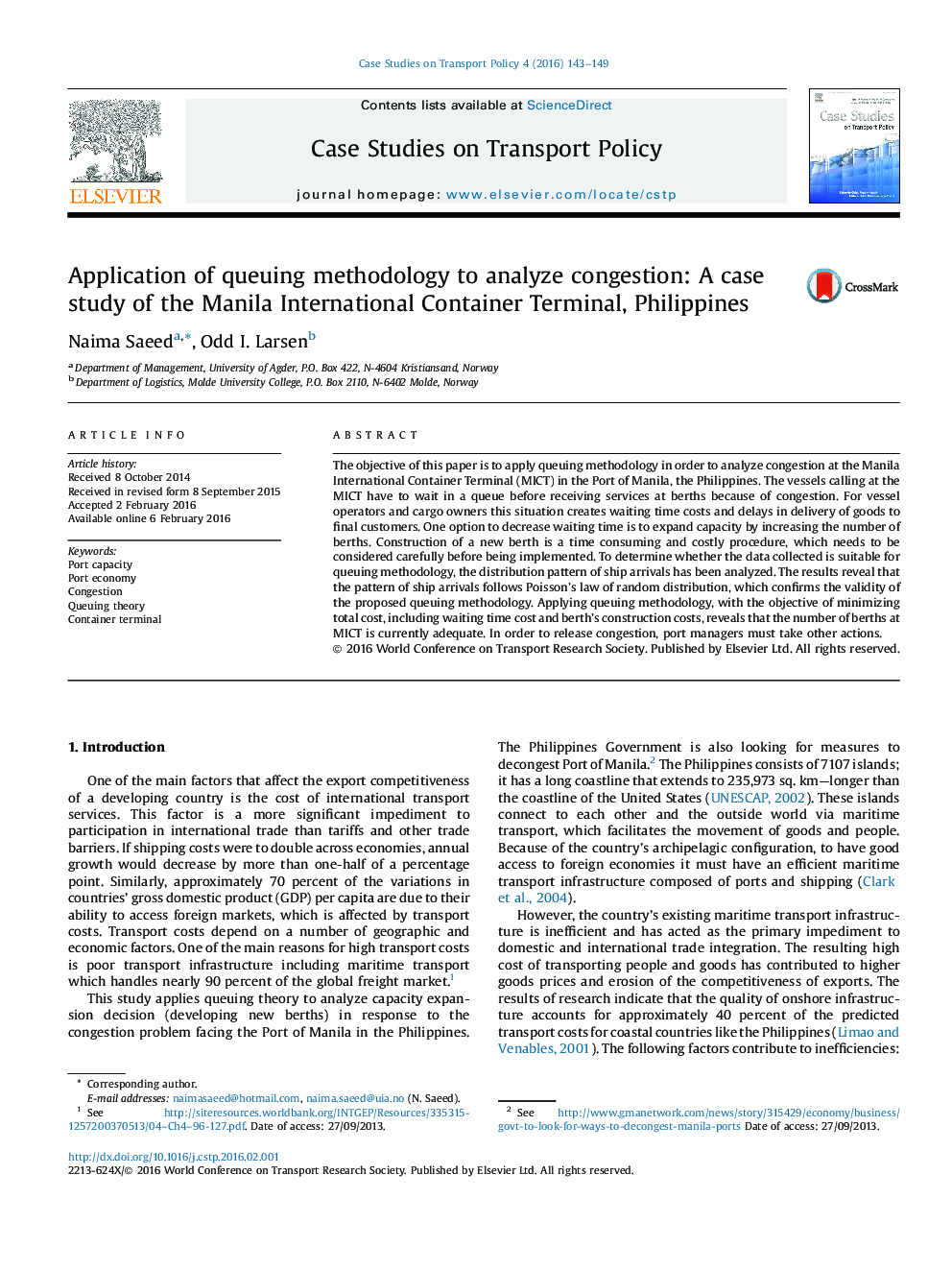| کد مقاله | کد نشریه | سال انتشار | مقاله انگلیسی | نسخه تمام متن |
|---|---|---|---|---|
| 250630 | 1362784 | 2016 | 7 صفحه PDF | دانلود رایگان |
• The vessels calling at the Manila International Container Terminal (MICT) have to wait in a queue before receiving services at berths because of congestion.
• We apply queuing methodology to analyze congestion at the MICT.
• We determine the number of berths that minimize total cost, including waiting time cost and berth’s construction costs.
• The results reveal that the number of berths at MICT is currently adequate.
• In order to release congestion, port managers must take other actions.
The objective of this paper is to apply queuing methodology in order to analyze congestion at the Manila International Container Terminal (MICT) in the Port of Manila, the Philippines. The vessels calling at the MICT have to wait in a queue before receiving services at berths because of congestion. For vessel operators and cargo owners this situation creates waiting time costs and delays in delivery of goods to final customers. One option to decrease waiting time is to expand capacity by increasing the number of berths. Construction of a new berth is a time consuming and costly procedure, which needs to be considered carefully before being implemented. To determine whether the data collected is suitable for queuing methodology, the distribution pattern of ship arrivals has been analyzed. The results reveal that the pattern of ship arrivals follows Poisson’s law of random distribution, which confirms the validity of the proposed queuing methodology. Applying queuing methodology, with the objective of minimizing total cost, including waiting time cost and berth’s construction costs, reveals that the number of berths at MICT is currently adequate. In order to release congestion, port managers must take other actions.
Journal: Case Studies on Transport Policy - Volume 4, Issue 2, June 2016, Pages 143–149
